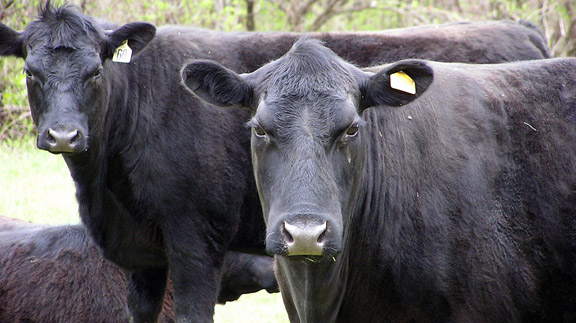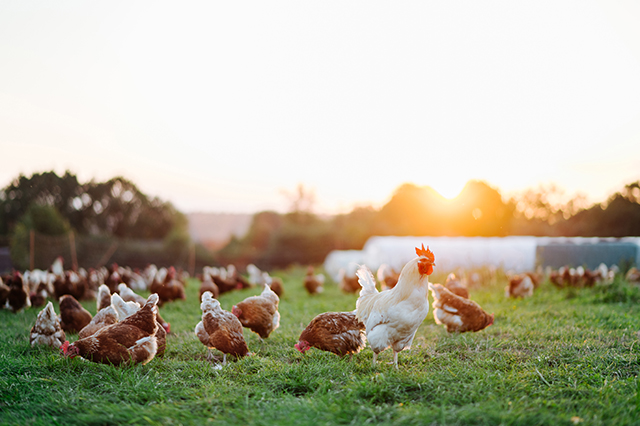Farm & Ranch
[AgriLife Extension] Tri-County Cattle Workshop set for Sept. 13 in Wichita Falls

Writer: Kay Ledbetter, 806-677-5608, [email protected]
Contact: David Graf, 940-716-8610, [email protected]
WICHITA FALLS – Optimizing efficiency in cattle production will be the theme of the Tri-County Cattle Workshop hosted by the Texas A&M AgriLife Extension Service Sept. 13 in Wichita Falls.
“Cattle Feeding Decisions for Efficient Production Cost” is set for 6-8 p.m. in the Region 9 Education Center, 301 Loop 11. The event is coordinated by the AgriLife Extension offices in Archer, Clay and Wichita counties.
Bryan Nichols, Noble Foundation livestock consultant from Stillwater, Okla., will provide training on the OSU CowCulator.
David Graf, AgriLife Extension agriculture and natural resources agent in Wichita County, said the training will be packed with valuable information producers need to survive today’s markets.
He said attendees will learn:
– How to adapt your herd and your forage for optimum efficiency.
– How to evaluate body condition score, the key to increasing percent calf crop.
– How to make informed decisions on various feed values and feed cost.
For more information, contact any of the following AgriLife Extension county offices: Archer, 940-574-4914; Clay, 940-538-5042; or Wichita, 940-716-8610.
-30-
Farm & Ranch
Mammals and Avian Influenza

By Barry Whitworth, DVM
At the writing of this article, High Path Avian Influenza (HPAI) H5N1 has been detected in more than 83 million domestic poultry in the United States. The outbreak includes commercial and backyard flocks.
Most people are aware that poultry may succumb to Avian Influenza but may not know that other animals can be infected with the virus. According to the U.S. Department of Agriculture, a variety of mammals have been infected with Avian Influenza H5N1 in the U.S.
The list of more than 200 mammals includes bears, foxes, skunks, coyotes, etc. Even marine animals such as dolphins and seals have been found with the virus. Current Avian Influenza H5N1 infections in poultry, mammals, and livestock in the U.S. can be found at the Detections of Highly Pathogenic Avian Influenza website at https://www.aphis.usda.gov/livestock-poultry-disease/avian/avian-influenza/hpai-detections.
Recently, ruminants have been diagnosed with Avian Influenza H5N1 in the U.S. The World Organization for Animal Health reported that neonatal goats displaying neurological clinical signs and death were positive for Avian Influenza.
To read more, pick up a copy of the May issue of NTFR magazine. To subscribe by mail, call 940-872-5922.
Farm & Ranch
Meanwhile, Back at the Ranch…

By Rayford Pullen | [email protected]
When May arrives, we start thinking about weed control. With two years of drought under our belts, grass grazed short and hay stocks depleted, what we do now will influence our forage conditions for the entire year. With 75 percent of our annual warm season forages made by July 15 in North Texas, we need to get the grass growing while the sun shines.
Speaking of the sun shining, the biggest deterrent to growing lots of grass is restricted sunlight, and the biggest sun blockers we have are weeds.
Have you noticed weeds are normally just slightly taller than your grass and are probably blocking 90 percent of the sunlight from reaching the grass itself? So obviously, we need to improve conditions, so sunlight reaches the plants we want to grow.
With grass extremely short, more sunlight is hitting the soil surface now, which in turn results in more weed seed germinating. With the moisture we have received, we expect an abundance of weeds this year.
To read more, pick up a copy of the May issue of NTFR magazine. To subscribe by mail, call 940-872-5922.
Farm & Ranch
Land Market Report: March Land Sales

By Jared Groce
Rural land sales are continuing on a steady pace for early spring, with prices holding very strong with the sell-to-list price ratios remaining very high, even on properties that have been on the market for a longer than usual time period. The total number of transactions are picking up once again as the spring selling season kicks off, and the average acreage continues to decrease.
Larger acreage properties seem to be in higher demand than smaller properties currently, with many buyers simply parking cash in real estate to hedge against inflation. Interest rates seem to have settled down and most experts agree that rates will be reduced by the fed this year. Some lenders have programs in place that allow the buyer to reduce their rates without having to go through a full refinance ordeal.
To read more, pick up a copy of the May issue of NTFR magazine. To subscribe by mail, call 940-872-5922.
-

 Country Lifestyles1 year ago
Country Lifestyles1 year agoScott & Stacey Schumacher: A Growth Mindset
-

 Equine8 months ago
Equine8 months agoThe Will to Win
-

 Country Lifestyles7 years ago
Country Lifestyles7 years agoStyle Your Profile – What your style cowboy hat says about you and new trends in 2017
-

 Country Lifestyles4 years ago
Country Lifestyles4 years agoAmber Crawford, Breakaway Roper
-

 HOME7 years ago
HOME7 years agoGrazing North Texas – Wilman Lovegrass
-

 Outdoor9 years ago
Outdoor9 years agoButtercup or Primrose?
-

 Country Lifestyles7 years ago
Country Lifestyles7 years agoDecember 2016 Profile, Rusty Riddle – The Riddle Way
-

 Country Lifestyles8 years ago
Country Lifestyles8 years agoJune 2016 Profile – The man behind the mic: Bob Tallman






